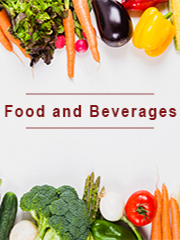TOP CATEGORY: Chemicals & Materials | Life Sciences | Banking & Finance | ICT Media

Download Report PDF Instantly
Report overview
The global "Nutraceutical Products Market" was valued at US$ 172.3 billion in 2023 and is projected to reach US$ 272.9 billion by 2030, at a CAGR of 7.0% during the forecast period. The influence of COVID-19 and the Russia-Ukraine War were considered while estimating market sizes.
Nutraceutical products are food-derived items that provide health benefits beyond basic nutrition. They include dietary supplements, functional foods, and fortified beverages, often containing vitamins, minerals, herbs, or other bioactive compounds aimed at promoting overall health and preventing disease.
Consumer Demographics
Age Group: The primary consumers of nutraceutical products are individuals aged 35-54, accounting for about 50% of total sales. Consumers aged 18-34 represent 30% of the market, while those aged 55 and above make up the remaining 20%.
Gender Distribution: Female consumers dominate the market, representing 60% of total purchases. Male consumers account for 40%, indicating a strong interest in health and wellness among women.
Regional Insights
North America: The largest market, with a 40% share of global sales, driven by high health awareness, disposable incomes, and a strong retail infrastructure for health products.
Europe: Accounts for 30% of the market. The demand is fueled by stringent regulatory standards, a high aging population, and a growing preference for preventive healthcare.
Asia-Pacific: A rapidly growing market, holding 20% of global sales. Increasing health awareness, rising disposable incomes, and rapid urbanization in countries like China and India are key growth drivers.
Rest of the World: Covers the remaining 10% of the market, with notable growth in emerging markets in Latin America and the Middle East.
Consumer Preferences
Product Types: Dietary supplements are the most popular, preferred by 50% of consumers. Functional foods and beverages are also significant, making up 30% and 20% of the market, respectively.
Health Benefits Sought: The primary health benefits consumers seek include immune support (35%), digestive health (25%), heart health (20%), weight management (15%), and bone/joint health (5%).
Purchasing Behavior
Frequency of Purchase: On average, consumers purchase nutraceutical products every 1-2 months. Approximately 45% of consumers buy these products regularly as part of their health and wellness regimen.
Retail Channels: Online sales have surged, now representing 50% of total purchases. Brick-and-mortar stores, including health food stores, pharmacies, and supermarkets, account for the remaining 50%.
Technological Trends
This report studies the Nutraceutical Products market, covering market size for segment by type (Amino Acids, Peptides and Proteins, Lutein, etc.), by application (Convenience Stores, Drug Stores, etc.), by sales channel (Direct Channel, Distribution Channel), by player (Abbott Laboratories, ADM, Ajinomoto, Amway, Bayer, etc.) and by region (North America, Europe, Asia-Pacific, South America and Middle East & Africa).
This report provides detailed historical analysis of global market for Nutraceutical Products from 2018-2023, and provides extensive market forecasts from 2024-2032 by region/country and subsectors. It covers the sales/revenue/value, gross margin, historical growth and future perspectives in the Nutraceutical Products market.
Leading Players of Nutraceutical Products including:
Market split by Type:
Market split by Application:
Market split by Sales Channel:
Market split by Region/Country:
If you have any special requirements, please let us know and we can provide you the customized report as you want.